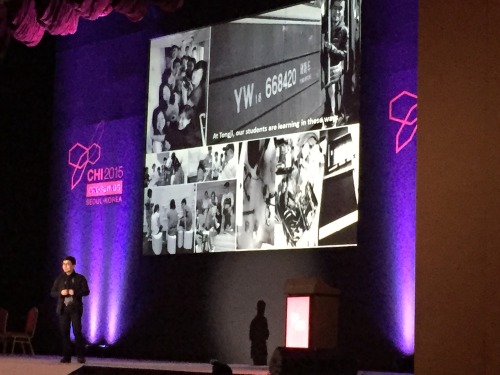My entire academic background – BS, MS, PhD – is in Mechanical Engineering. However, in addition to conferences hosted by the American Society of Mechanical Engineering, I also attend the suite of ACM’s Human-Computer Interaction (HCI) Conferences. So, why should Mechanical Engineering care about HCI?
First, product design includes interfaces. ‘Product design’ refers to the blend of mechanical engineering and industrial design. Design is the ‘outward facing’ side of Mechanical Engineering; product designers conceptualize, design, and implement many of the physical products you interact with on a daily basis. In the cafe that I’m currently writing from, a design engineer was involved in everything from the teacup, the teapot, the table, the chair, and the laptop I’m writing on… and all the packaging that each of those products arrived in. These traditional products still have interfaces – examples from Don Norman’s infamous “Design of Everyday Things” address how people physically interact with ‘non-smart’ products and devices such as teapots, doorknobs, or rotary telephones. Today’s product designers are asked to not only design the physical product, but also weigh in on how the user should interact with smart products.
Second, design research in mechanical engineering can learn from findings from interaction design. Early-stage phases of new product development – particularly user research and concept generation– are agnostic to whether or not the final ‘product’ is a physical product, software, a physical or digital service, or an architectural space. As a result, many of the same design theory principles coming out of the interaction design community are broadly applicable to other design domains, including product design or new product development, within some level of translation.
Finally, engineers deserve well-designed technology. Engineers are people too – and, while computer scientists frequently design new programming environments for themselves, mechanical engineers and new product developers are not always the subject of thoughtful, human-centered technology design. Taking an HCI perspective to understand how engineers and designers are users of software opens up the possibility for better-designed tools in the future (I’m looking at you, CAD!).
… so why should HCI care about Mechanical Engineering?
It’s sometimes easy to get lost in cognition, perception, algorithms, and pixels. However, when mechanical engineers check their gut, they see the physical interface between humans and computers. You’ll see plenty of relevant contributions from Mechanical Engineering in the areas of ergonomics, haptic feedback, or tangible interfaces. But more broadly, mechanical engineers offer the reminder that humans (and computers) still primarily exist in a physical world.


